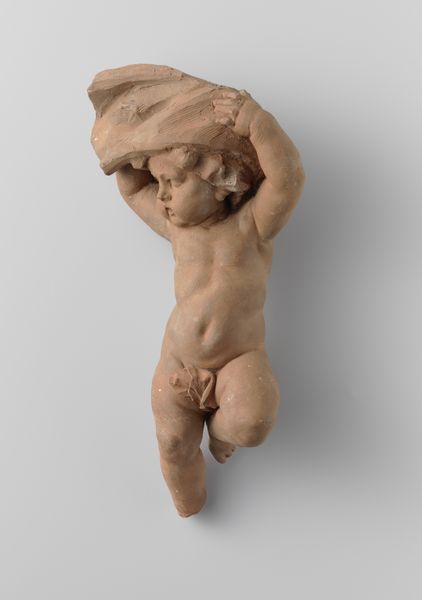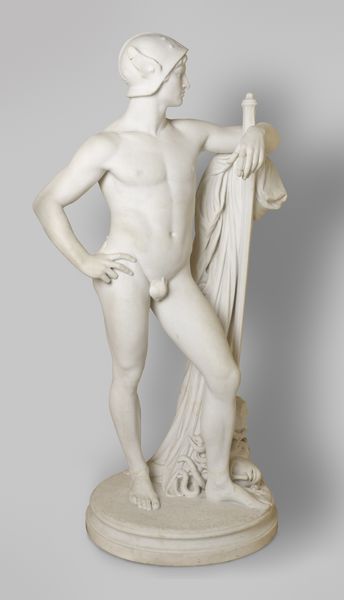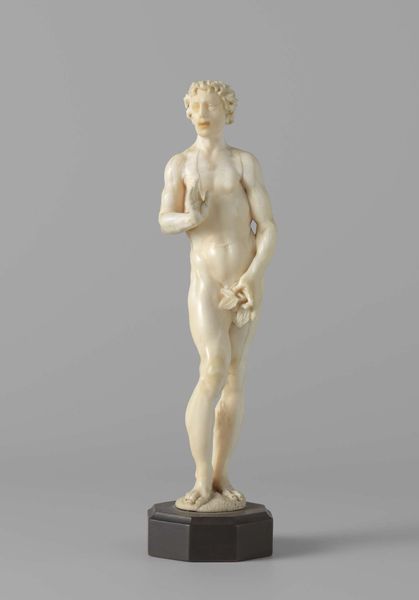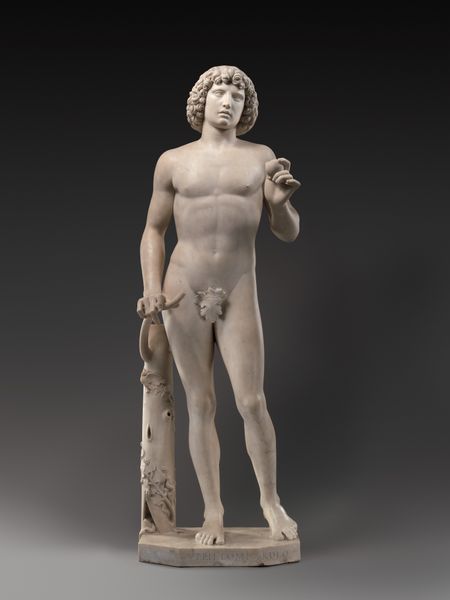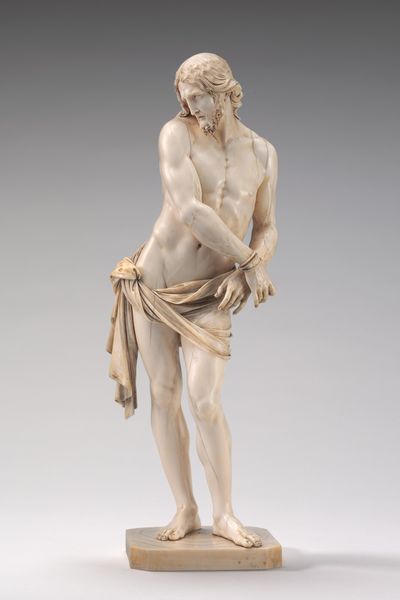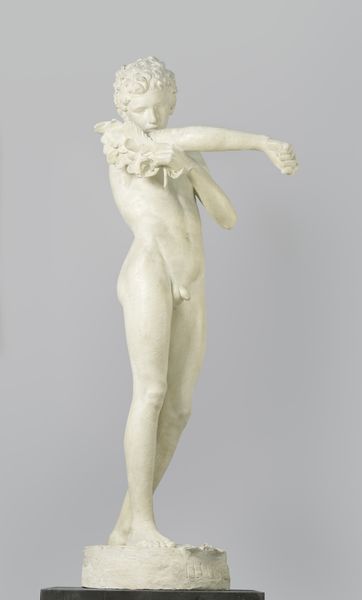
sculpture, marble
#
portrait
#
sculpture
#
mannerism
#
figuration
#
11_renaissance
#
sculpture
#
decorative-art
#
marble
#
nude
Dimensions: Overall (confirmed): 54 × 21 × 18 in. (137.2 × 53.3 × 45.7 cm)
Copyright: Public Domain
Curator: Standing before us is Domenico Poggini's marble sculpture, "Bacchus," created in 1554. Editor: It’s smaller than I expected, almost feels like a decorative object for a wealthy household rather than a monumental statement. Curator: That’s a key point. Mannerist sculpture often served precisely that purpose: displaying wealth and cultural capital through refined craftsmanship. We need to think about who commissioned this piece, and the market that sustained artists like Poggini. Editor: So, less about artistic expression and more about satisfying the desires of a particular class. Still, look at the marble – the tooling marks, the slightly rough texture, it speaks of a significant labor investment. It also connects the figure to the raw material of the earth. Curator: Precisely. Consider how Bacchus, god of wine and revelry, is being presented here. He's youthful, almost androgynous, holding a bunch of grapes but possessing none of the wildness we often associate with him. This taming, this domestication of a powerful mythological figure, tells us much about the societal values of the time. The elites liked their chaos controlled, their bacchanals, well, decorative. The politics of imagery, the way a figure like Bacchus could be reshaped… fascinating. Editor: And yet, even contained, the sensuality is undeniable. The soft curves of the body, the gentle contrapposto, invite tactile engagement. What I find interesting is to juxtapose the inherent "sexiness" to the hard work. Laborers toiling to realize someone else's vision of an untamed entity refined. It speaks to broader patterns of patronage and the division of labor. Curator: Absolutely, and think about the context in which this sculpture would have been displayed. It wouldn’t have been in a public museum but likely within a private collection, perhaps even as part of a larger allegorical program of art. The elite are the primary audience and controllers of how this myth will be portrayed. It is very difficult to not have that be reflected within this presentation. Editor: Seeing Bacchus here today… it really brings home the point about the complex interplay between materials, making, and the shaping of narratives of what high art means and can convey about us as humans. Curator: Indeed. The Bacchus we see before us has layers of complexity: patronage, political power, societal expectation and reception – all carefully sculpted into this elegant form, waiting to be unveiled by those of us ready to receive and explore the truths to discover.
Comments
No comments
Be the first to comment and join the conversation on the ultimate creative platform.

